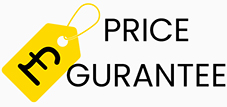




















Hitting into a net is a game-changer for practice frequency, but choosing the right ball matters. Using the wrong type can hinder progress, damage your net, or even be unsafe.
We break the guide down into 7 sub topics as below;
Let’s break down the key factors, including the use of lake balls;
Lake balls bridge the gap perfectly for net practice. They deliver the crucial realistic feel, sound, and feedback of premium balls (Titleist Pro V1/Pro V1x Lake Balls are excellent examples) at a significantly lower cost than buying new.
For dedicated net sessions focused on strike quality and swing mechanics, they are often the most practical and effective choice available at onlinegolfshop.com.
Alex Smith is the Head PGA Pro at Online Golf Shop. With over 20 years of experience in the golf industry, Alex has a passion for helping golfers improve their game. He shares trusted and authentic advice through tips, tricks, and thorough product reviews—always based on his own experiences and insights. Alex also helps shape our product selection, making sure it’s tailored to every golfer’s needs, helping you find the right equipment and strategies to play your best golf!


Phone: 020 8064 0105